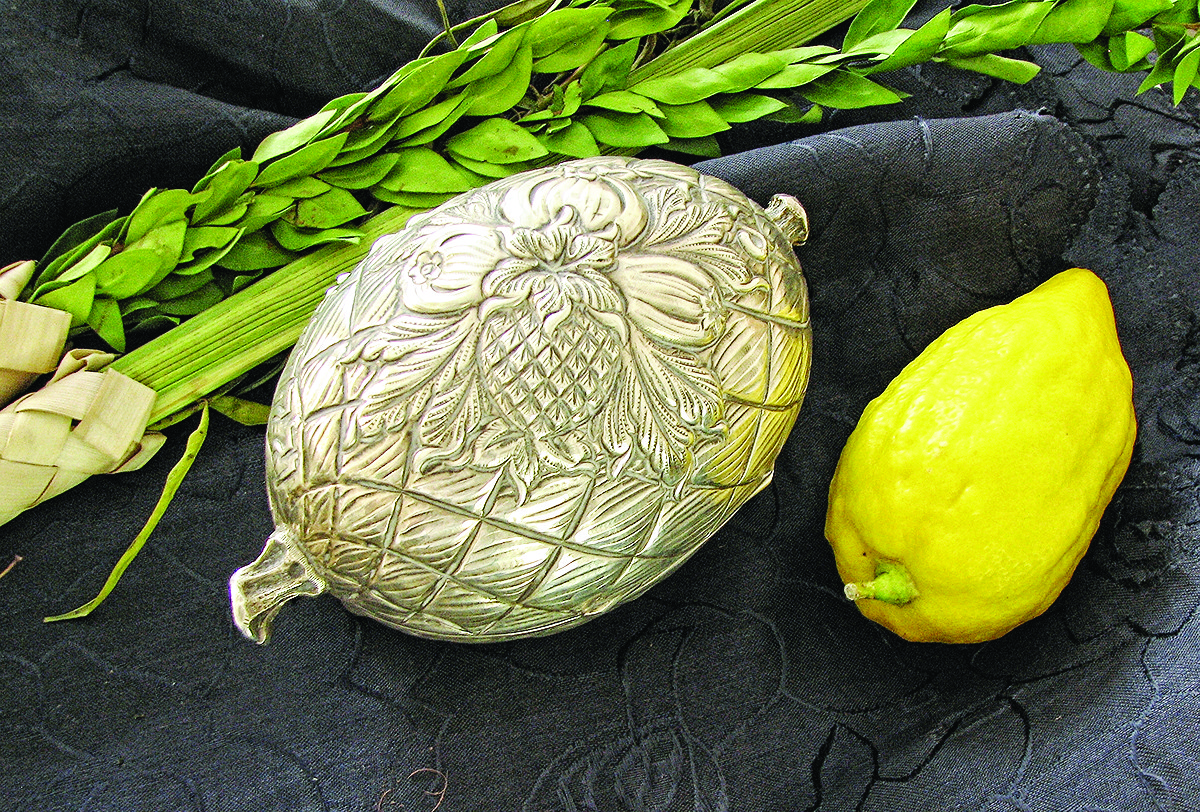How to celebrate Sukkot without a sukkah
(My Jewish Learning via JTA) – The central mitzvah of Sukkot is found in Leviticus 23:42, where Jews are commanded to dwell in a sukkah, a temporary hut, for seven days and nights. We do this in order to remember the experiences of our ancestors, both on the journey from Egypt to the Land of Israel and in a later era, when farmers brought offerings to the ancient Temple in Jerusalem at the time of the harvest.
But many people live in climates, neighborhoods or buildings that preclude constructing and living in a sukkah. A local synagogue, campus Hillel or even Kosher restaurant will likely have one that you can use to fulfill the mitzvah of sitting in a sukkah. Yet everyone, with or without a personal sukkah, can turn to creative interpretations of “dwelling” and focus on the aspects of Sukkot that are oriented toward other rituals and customs to enrich the holiday experience.
At home in a hut
In the Torah, the children of Israel used sukkot (plural of sukkah) as their temporary homes while traveling through the desert. Instead of constructing your own temporary space — or in addition to it — you can help someone else acquire a permanent home. Habitat for Humanity, a non-profit organization, runs building projects in many urban areas. There are also many Jewish organizations that address homelessness and poverty, such as the numerous groups that are part of the Jewish Social Justice Roundtable.
Other service programs in your community may help individuals transition from homeless shelters into homes by collecting housewares and other necessary items. The acknowledgement that there are those in our communities who have no shelter at all can bring a meaningful awareness to your celebration.
A temporary dwelling
A sukkah is a transitional shelter meant to provide only the basic structure of a building. In fact, Jewish law requires a minimum of 2 1/2 walls, and the ceiling, covered in tree branches and leaves, must be open enough so that the stars are visible.
One alternative is to build a sukkah-like structure indoors. For children, the act of building forts and tents is the creation of a personal play space. Adults can build a canopy over the dining room table using a tablecloth, or even over the bed – perhaps to look like a huppah, or wedding canopy – to enjoy the temporary shelter and reminder of transition that it evokes.
Harvest holiday
In the Bible, Sukkot marked the time of the fruit and grape harvests. It is also harvest time in North America, and the produce of the season is readily available. You can visit a farmers’ market or even a farm to buy or help harvest seasonal fruits and vegetables. Go apple picking or just visit the park to collect fallen leaves and twigs to use as decorations. Create centerpieces for the home with fruits and vegetables, and plan meals that incorporate a wide selection of local produce. Look for the variety of produce imported from Israel during this time of year, as well.
The four species
The lulav and etrog are made up of four kinds of plants (citron/etrog, palm/lulav, myrtle/hadas and palm/arava) and are often called the four species, or “arba minim.” They function as one unit, and we say one blessing over them together: Their purpose is to gather and enjoy the plants of the land. Anyone can shake a lulav at home, in a synagogue or wherever you find yourself, even out in the natural world. A lulav and etrog can be found online or in a local Judaica store.
The four are often referred to under the inclusive term lulav, since the lulav is the largest and most prominent of the species. Thus, while the mitzvah is to wave the lulav, this actually refers to waving all four species: palm, willow, myrtle and etrog. Also, when people refer to the lulav and etrog, they are referring to all four species, including the willow and myrtle.
Ushpizin
Welcoming guests is a Jewish value expressed all year by the mitzvah of “hachnasat orhim” (welcoming guests). Invite guests to your home for a sukkah party or a meal and serve harvest-themed treats. You might also host a picnic in a local park.
At Sukkot we specifically welcome ushpizin, traditionally one of seven exalted men of Israel to take up residence in the sukkah with us: Abraham, Isaac, Jacob, Joseph, Moses, Aaron and David. Be creative and encourage your guests to welcome their own ushpizin – famous personalities and heroes, ancient or modern, Jewish or not Jewish, who lived exemplary lives and continue to inspire.
The time of our joy
In Jewish liturgy, Sukkot is referred to as the time of our joy, “z’man simchateinu.” Take time off to spend with family or friends, or make lots of phone calls to wish a “chag sameach,” a happy holiday, to loved ones who are too far to visit.
Make your home a joyful place with decorations in the spirit of the holiday: Decorate your front door with a harvest theme, hang paper chains from your ceilings or build a mini-sukkah out of graham crackers, pretzels and icing to serve as a fun treat. Sukkahs (the Hebrew plural is sukkot) in Israel are often decorated with what Americans would refer to as “Christmas lights,” so grab a box and string them around your windows and walls to transform your home into a sukkah.
The space and financial investment needed to build a sukkah can be very real, but finding ways to celebrate the holiday only takes some creative thinking.
SARA SHAPIRO-PLEVAN serves as the coordinator of congregational education for New York City for the Board of Jewish Education of Greater New York.








